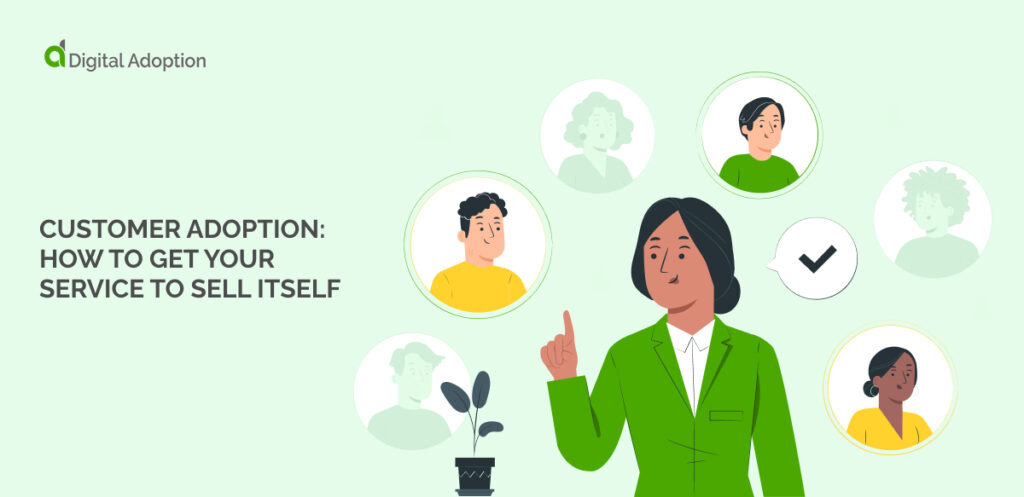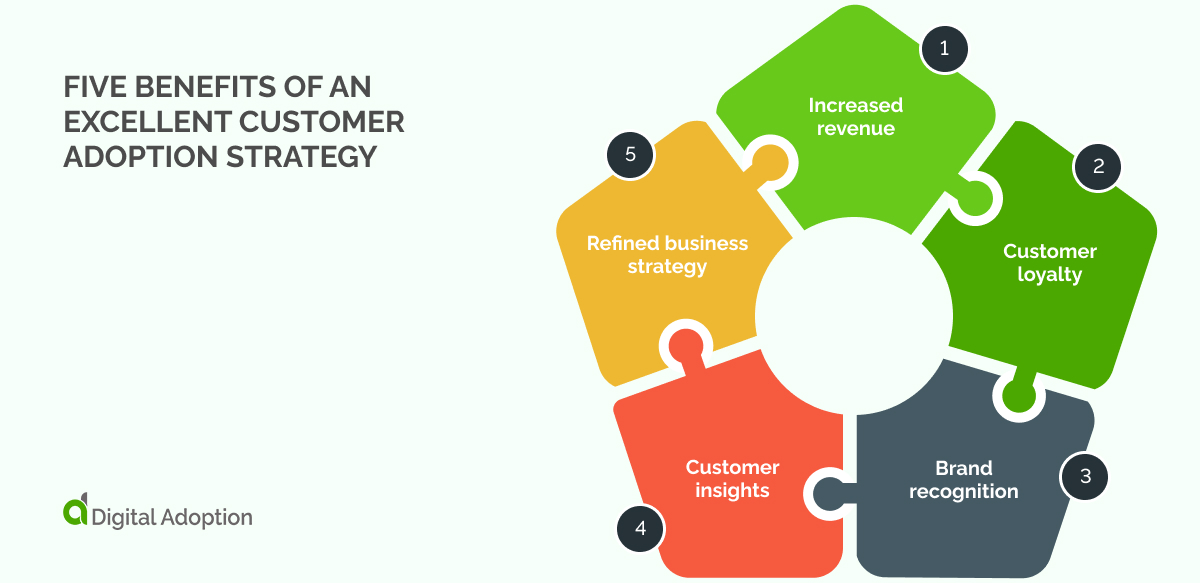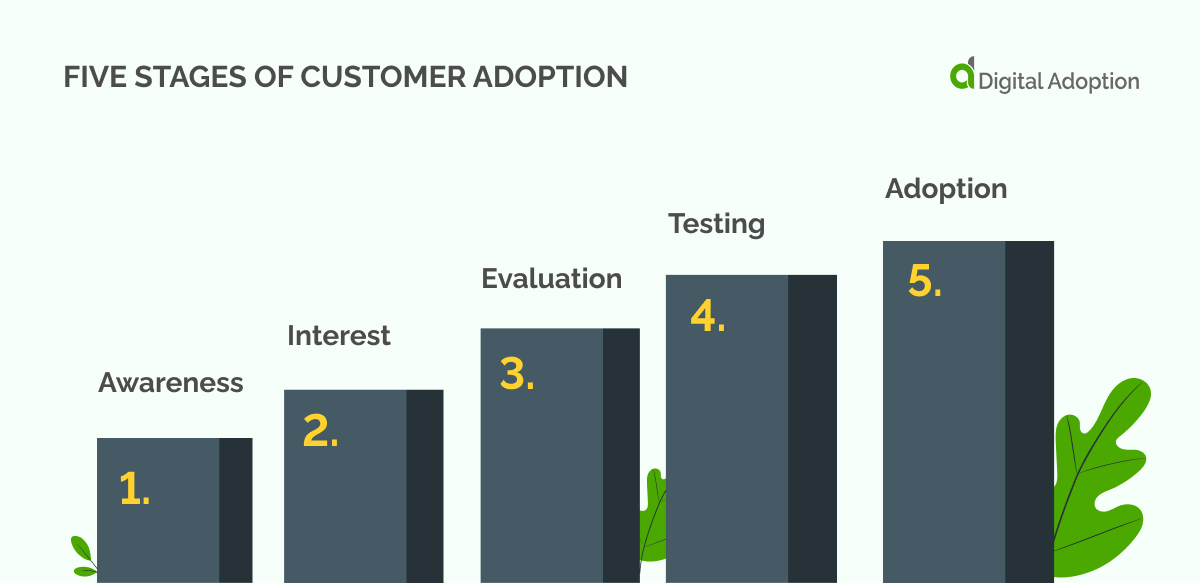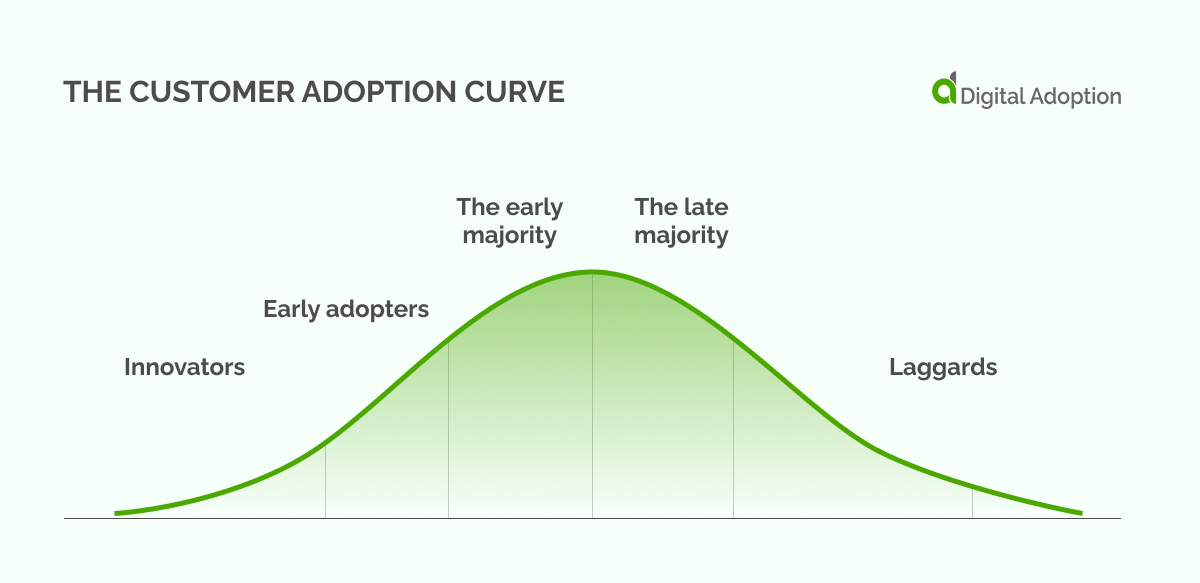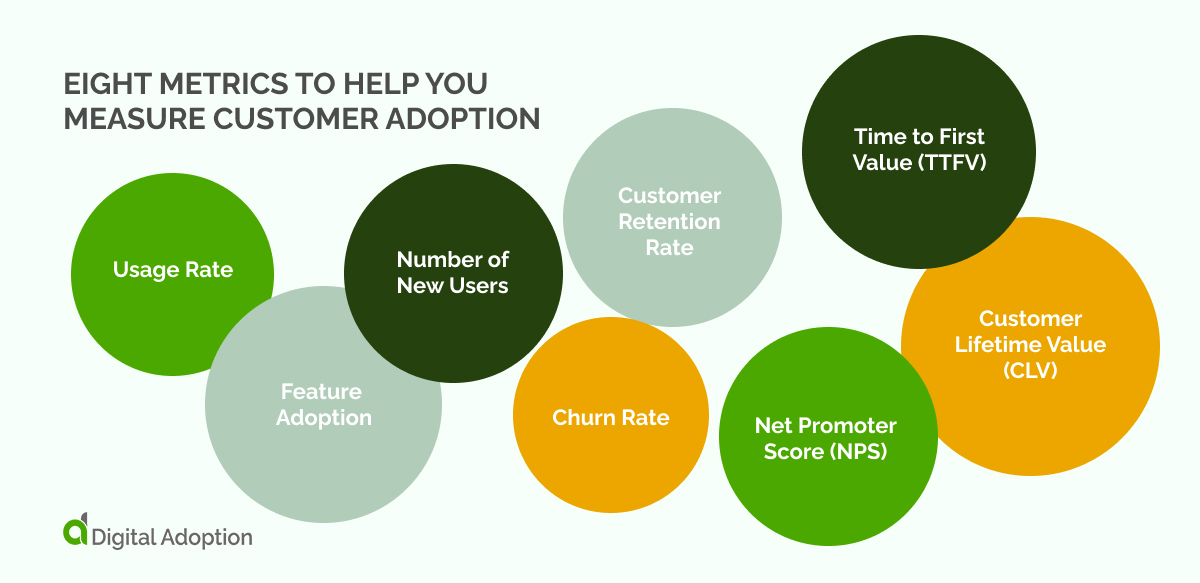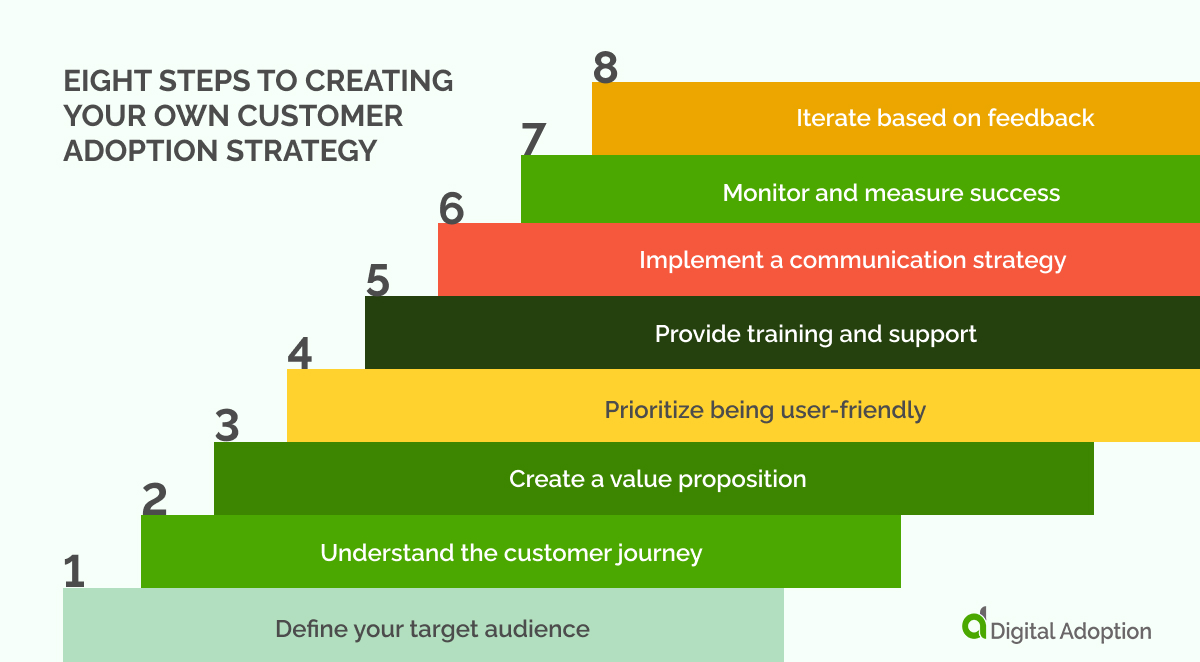You can spend all the time and resources in the world developing the best product, the best service, or the hottest new features available on the market.
And still, nobody will use it unless you invest some resources in customer adoption.
It’s disheartening to complete a successful digital transformation only to be met by a lack of digital adoption.
Customer adoption should be built into your strategy for any new offering— it’s a critical part of the process of the product development process.
On top of that, consumer attitudes are shifting in a way that may put even more importance on customer adoption strategies.
According to Gartner’s Future of Sales report, 33% of all buyers desire a seller-free sales experience. If you’re looking at just millennials, that preference rises to 44%.
That means your product or service will need to sell itself in the future.
In this article, we’re sharing everything you need to know about customer adoption. What it is, how to do it, and what you stand to gain from nailing it.
By the time you’re done reading, you’ll know exactly what to do to create a new offering that sells itself.
What is customer adoption?
Customer adoption is the process through which new customers start to use and gain value from a product or service.
It’s not just about making a purchase; it includes the entire journey of a customer becoming aware of the product, understanding its value, purchasing it, using it, and eventually becoming a loyal customer.
Customer adoption can be viewed from two perspectives:
From the customer’s perspective:
Customer adoption is about how they move through the stages of:
- Having a problem
- Becoming aware of a solution (your product or service)
- Deciding that your solution is worth their investment
- Learning how to use it
- Integrating it into their routine
- Seeing the value it provides
From the company’s perspective:
Customer adoption is how well your target market accepts your product or service.
This could involve metrics like:
- Number of new users
- Frequency of use
- User retention rate
- Customer lifetime value.
A high customer adoption rate can signify a good product-market fit and a successful go-to-market strategy.
Five benefits of an excellent customer adoption strategy
You should know that customer adoption is an essential part of the product development process.
But that doesn’t mean you should treat it as a necessity and commit the bare minimum resources to customer adoption that you can get away with.
Here are five compelling benefits you stand to gain if you nail the customer adoption process:
-
Increased revenue
The more customers you can get to adopt your product or service, the more money you’ll make.
This is especially true if your product or service is subscription-based.
-
Customer loyalty
Customers who have adopted your product are more likely to become loyal customers.
That means they’ll stick with you for the long run and recommend your product or service to others.
-
Brand recognition
More people becoming aware of and using your product or service increases brand recognition.
This can be a powerful marketing tool to attract even more potential customers.
-
Customer insights
When a customer adopts your product or service, they’ll provide valuable feedback and insights that you can use to improve the product and increase customer satisfaction.
This is especially true if you have a system in place to collect customer feedback.
-
Refined business strategy
By monitoring customer adoption and tracking metrics such as user retention, you can gain insights into what’s working and what’s not.
This allows you to refine your go-to-market strategy for greater success.
Five stages of customer adoption
Customer adoption can be broken down into five stages: awareness, interest, evaluation, testing, and adoption.
Being aware of these stages is critical because knowing where your customers are in their journey is essential for ensuring that you provide them with the right information at the right time.
Let’s take a more detailed look at each stage:
-
Awareness
At this stage, a customer becomes aware of your product or service.
This could come from word-of-mouth referrals, online advertising campaigns, or simply stumbling across it while browsing the internet.
The goal here is to get potential customers interested in what you have to offer— enough so that they’re willing to move on to the next step.
-
Interest
Once a customer has become aware of your offering, they may need convincing before deciding to take things further.
At this stage, it’s important to communicate how your product solves their problem and why it’s the best solution for them.
-
Evaluation
When customers become interested in your product, they’ll start to evaluate it against other options.
This could involve comparing prices or reading reviews from other customers.
Here, it’s important to showcase your product’s features and advantages over alternatives to stand out from the competition.
-
Testing
At this stage, customers are now committed enough that they may want to try your product before committing to a purchase decision.
Offering free trials or samples can effectively encourage customers to move one step closer to adoption.
-
Adoption
Once a customer has tested your product and is happy with the results, they’ll be ready to purchase and become an official user.
It’s important to make this process as simple and straightforward as possible.
The customer adoption curve
As well as knowing which stage of the adoption process your customers are at, you also need to know which group they belong to on the customer adoption curve.
Your strategies to entice customers will be heavily informed by where they sit on the customer adoption curve.
Also known as the technology adoption curve, this bell curve divides customers into five groups based on their willingness to adopt a new product or technology.
Here are these groups:
Innovators (2.5% of total potential adopters)
Innovators are the first to adopt a new product.
They are risk-takers and are often willing to try an unproven product simply because it’s new.
Early adopters (13.5%)
Early adopters are the second group to use a product.
They are willing to try new things but are more selective than innovators.
They often have a degree of leadership and influence within their social circles, which can help spread the word about the product.
The early majority (34%)
The early majority is more cautious and will wait until they have seen evidence that the product works before they adopt it.
They rely on the recommendations and reviews of early adopters.
The late majority (34%)
The late majority is skeptical about new products and will only adopt them once they have become mainstream and widely adopted.
They often adopt new products out of necessity rather than desire.
Laggards (16%)
Laggards are the last group to adopt a product.
They are averse to change and might only try a new product when it has been fully established, or their current alternatives are no longer available.
Eight metrics to help you measure customer adoption
When looking at customer adoption from the perspective of a business leader, you need to know how to measure it.
The metrics you use to measure customer adoption are up to you— choose metrics that align with your goals.
But if you’re looking for ideas, here are eight common metrics businesses use to measure customer adoption:
-
Number of New Users
This is a fundamental metric for most companies.
The number of new users can indicate how well your marketing and sales strategies are working to attract new customers.
-
Usage Rate
This metric measures how often customers are using your product.
For example, if you have a software product, you might track the number of logins or active user sessions.
-
Feature Adoption
If your product has multiple features, tracking which ones are being used can give you insight into how well different aspects of your product are being adopted.
-
Customer Retention Rate
This metric measures the percentage of customers who continue to use your product over a given period.
High retention rates can indicate successful customer adoption.
-
Churn Rate
This is the opposite of the retention rate and measures the percentage of customers who stop using your product over a given period.
-
Time to First Value (TTFV)
This metric measures the time it takes for a customer to realize value from your product after initial purchase or signup.
-
Net Promoter Score (NPS)
This measures how likely customers are to recommend your product to others.
A high NPS can indicate successful adoption and customer satisfaction.
-
Customer Lifetime Value (CLV)
This measures the total revenue you can expect from a single customer account over the duration of their relationship with your company.
A high CLV can indicate successful adoption.
5 Qualitative, experience-centric metrics for measuring customer adoption
Nowadays, hard metrics alone won’t cut it.
If you truly want to understand the customer experience, you need to supplement hard, quantitative metrics with soft, qualitative metrics.
Qualitative metrics usually involve more interpretive measures and provide valuable insights into user attitudes, perceptions, motivations, and experiences.
Experience-centric metrics are a relatively new school of thought, but that’s exactly why you should use them— they could give you a competitive advantage. A Forrester report found that “becoming an experienced business” can deliver 1.4x revenue growth, 1.7x customer retention rates, and 1.6x customer lifetime value.
Here are five qualitative metrics you need to know:
-
Customer Satisfaction
While customer satisfaction can be measured quantitatively through scales or ratings, it can also be assessed qualitatively through open-ended feedback, interviews, or case studies.
-
User Experience and Usability
You can gain valuable insights through user testing sessions, focus groups, or customer interviews.
Here, you’re trying to understand the user experience, what they like or dislike, their difficulties, and how the product could be improved.
-
Customer Testimonials and Case Studies
These are in-depth, qualitative studies of individual or group customers, documenting their experiences with the product, the value they’ve received, and their success stories.
-
Feedback on Product Features
Customers can provide feedback on specific features of your product.
This feedback can help identify which features are most valuable or need improvement.
-
Customer Motivations and Pain Points
Understanding why customers use your product (motivations) and what problems they’re trying to solve (pain points) can provide valuable insights for product development and marketing.
Eight steps to creating your own customer adoption strategy
We’ve delivered a lot of theory. Let’s switch to something more practical.
If you’re ready to develop a customer adoption strategy but don’t know where to start, we’ve broken the process into eight simple stages.
-
Define your target audience
Identify your ideal customers, and understand their pain points, needs, and expectations.
Conduct market research, collect customer data, and use analytics to understand their demographics, psychographics, and behaviors.
-
Understand the customer journey
Understanding the customer journey will help you determine where and when to engage your customers to drive adoption.
Create a customer journey map to plan every step, from awareness to purchase to advocacy.
-
Create a value proposition
Clearly define what makes your product or service unique and beneficial to the customer.
Your value proposition should be customer-centric, focusing on how your product solves a problem or fills a need for the customer.
-
Prioritize being user-friendly
Ensure that your product and onboarding process is user-friendly and intuitive.
If a product is difficult to use, customers are less likely to adopt it.
Consider user testing and feedback to continuously improve the user experience.
-
Provide training and support
Customers might need help learning how to use your product.
Offer resources like online training, tutorials, FAQ pages, webinars, and customer support to assist them.
-
Implement a communication strategy
Use different communication channels to reach your customers, such as emails, social media, webinars, and events.
Keep them informed about updates, new features, and useful tips related to your product or service.
-
Monitor and measure success
Measure customer adoption rates using relevant metrics such as the number of new users, frequency of use, user retention rate, etc.
Keep track of these metrics to monitor progress and identify areas of improvement.
-
Iterate based on feedback
Constantly seek feedback from your customers to understand their experience and expectations.
Use this feedback to refine your product and your customer adoption strategy.
Customer adoption: The one key thing you need to remember
Customer adoption is an essential part of any successful business strategy, and there are many benefits from getting customers to adopt your product or service.
But as you can see, it’s far from simple.
If you’re feeling overwhelmed, there’s one simple strategy you can remember to be your guiding light.
According to Gartner, the key to improving customer experience lies in two simple actions: reducing customer effort while enhancing value.
You can’t go wrong if you apply that simple strategy to every facet of your business. You’ll have more happy, loyal customers every day, week, and month.

